Ian Melin-Jones
Surprising Paper Trends During the Coronavirus Pandemic
As people grow weary of online entertainment and digital communication in the age of COVID-19, industry analysts have noticed some interesting paper trends, particularly when it comes to books, education, entertainment and communication.
There’s no question that the coronavirus pandemic has changed many things about our daily lives, from the way we work and learn to the way we shop and play. The buying and consuming habits that have emerged over the past several months will keep sociologists and scientists busy for years as they study the effect of isolation on modern human behavior.
But as the novelty of working and learning from home wears off, only to be replaced by digital overload and Zoom fatigue, people have started turning off their electronics and embracing analog alternatives, if only for a few hours at a time. The resulting paper trends have created some bright spots for our industry.

Printed Book Sales Surge
Printed books have enjoyed a sharp increase in popularity since March. Rakuten Intelligence, a market research firm, recently tracked online sales for major companies, excluding Amazon. It reported that books saw a 777 percent increase in sales in the first half of April, compared to the same period in March.
The type of books people bought also reflected a shift in consumer focus. Publisher’s Weekly, which tracks category sales, reported in April that demand increased for books about outdoor skills (up 74 percent from a year ago) and medical history (up 71 percent). Other popular categories include cooking, DIY and gardening.
Many independent book stores have been able to stay afloat by transitioning to online and curbside sales of printed books during the shutdown. Kris Kleindienst, owner of popular St. Louis bookstore Left Bank Books, reported that sales in April and May exceeded sales for the same period in 2019, despite the store being closed to walk-in traffic.
“I feel cautiously optimistic,” Kleindienst told a local news outlet. “We’ve managed to survive the unthinkable now for a couple of months, and I see the resiliency in the community at large, and the creativity of all of the small businesses, and that people are responsive to that.
Activity Books Appeal to All Ages
Faced with supporting their kids’ distance learning while also trying to work from home, parents turned to activity books and other printed educational materials to supplement online classes and occupy their kids during nonschool hours.
Early in the pandemic, the top-selling printed book on Amazon was an activity book for preschoolers, and approximately half of Amazon’s top 100 print bestseller list featured educational and activity books for kids, establishing the category as one of the year’s hottest paper trends.
Dan Reynolds, CEO of Workman Publishing, which produces these types of books, told The New York Times, “This demand is at a level that we’ve never seen before.” The company has ordered millions of reprints of its activity books to fill orders from Amazon, major retailers and independent bookstores.
Other suppliers reported that sales of juvenile educational nonfiction rose nearly 40 percent in a single week in March, while sales of Scholastic educational workbooks increased nearly 70 percent in mid-March, compared to the same period in 2019.
That’s not to say activity books are just for kids. Current paper trends include sales of puzzle, coloring and workbook titles for all ages, which increased as much as 200 percent in the early months of the pandemic. Adult coloring books, one of the biggest paper trends a few years ago, have also enjoyed a comeback as people look for creative ways to entertain themselves when they’ve “finished Netflix.” Other activity books for adults, such as crossword, word search and sudoku puzzle books, are selling so fast publishers are scrambling to keep up.
Greeting Cards Say It Better
In one of the more poignant paper trends of 2020, sympathy and encouragement greeting cards are selling faster than manufacturers can restock them. With social distancing guidelines still in effect for much of the country, people who are unable to attend funerals are sending their condolences via greeting cards.
Kelly Ricker, chief creative officer of American Greetings, told ABC News, “During this time of social distancing, the ability to communicate in writing with friends and loved ones is more important than ever, to many consumers. Our ability to keep cards in stock has been limited at times by the various shelter-in-place orders that state and local governments have implemented.”
Sympathy card shortages don’t mean people have turned to digital alternatives, like electronic greeting cards or text messages. “Sending a sympathy message needs to be done in a heartfelt way, and a text or Facebook timeline posting is probably not adequate,” said Alan Friedman, a business owner who serves on the board of the Greeting Card Association.
The same could be said about other card categories. Paper Source’s sales of greeting cards increased 1,200 percent between March and May of this year. The increase is due not just to sympathy card sales but also to sales of friendship, thank you and Mother’s Day cards.
The company’s CEO, Winnie Park, said in a recent interview that the slower pace of pandemic life is inspiring this and other paper trends. “One of the great silver linings out of this is the time for people to slow down and go back to the basics,” she said. “We’ve seen explosive growth during this period.”
Will These Paper Trends Continue?
These and other paper trends will likely continue as long as the pandemic has its grip on our lives. Whether they’ll become permanent is anyone’s guess. But we think a return to paper is a nice alternative to video games, Netflix binges, chat groups, Zoom meetings and other online methods to pass the time. If you’re looking for creative ways to combat boredom while stay-at-home orders remain in effect, then consider these paper-based activities.
Q&A on the impacts of Covid-19 on Stora Enso’s operations
We continue to experience unprecedented times with the Covid-19 pandemic, which is affecting global health and creating uncertainty and volatility in the business environment. Stora Enso Investors Relations has received inquiries from investors and analysts related to the Covid-19 and its impacts on our business operations. Please find below some typical questions and answers.
Q: What precautions have you taken against Covid-19?
A: The health and safety of Stora Enso’s employees is a key priority. Stora Enso has secured the health and safety of its employees by various measures and closely monitoring the Covid-19 situation.
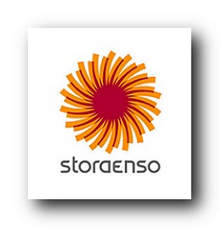 Thanks to Stora Enso's proactive approach thus far, there has been minimal impact on the Group's ability to serve customers and run operations. Stora Enso plays an important role in the society by providing vital materials for the food, hygiene and medical industries.
Thanks to Stora Enso's proactive approach thus far, there has been minimal impact on the Group's ability to serve customers and run operations. Stora Enso plays an important role in the society by providing vital materials for the food, hygiene and medical industries.
Q: How has Covid-19 impacted your Q2/2020 performance?
A: Group sales decreased by 19% in Q2/2020 from the previous year, negatively impacted by the Covid-19 pandemic. Sales prices were lower for most grades despite active mix management and a slightly positive foreign exchange rate impact. Volumes were also clearly lower in all other divisions except Packaging Materials, because the Covid-19 pandemic reduced demand, accelerated structural decline of paper demand and created uncertainty.
In Q2/2020, Stora Enso delivered an operational EBIT of EUR 178 million, about the same as in the first quarter this year (EUR 180 million). Operational EBIT excluding Paper was EUR 216 million, much stronger than during the first quarter (EUR 159 million). Cash flow from operations was EUR 363 million. We consider the second quarter result good in the current circumstances. This was driven by strong performance in the Packaging Materials and Forest divisions, and Wood Products division delivering a better result than expected. The pandemic's biggest effect on our business has been in the Paper division, accelerating the structural decline in all paper grades. Excluding Paper, our operational EBIT margin stayed at 13% in Q2/2020, showing the resilience of our growth businesses.
Q: How has Covid-19 impacted your sales prices?
A: In the following, we have compared prices in Q2/2020 compared to Q1/2020.
In consumer board business, majority of our customer contracts are annual or longer validity, and the prices remained stable in Q2/2020. In containerboard and wood products businesses, price level increased slightly in Q2/2020. For market pulp, prices remained flat during the quarter. Corrugated packaging prices were slightly lower level in Q2/2020. Due to Covid-19 pandemic and overcapacity in Europe, paper prices decreased slightly in Q2/2020 compared to previous quarter.
Q: Have your units and mills been operating normally?
A: All our units and mills operated normally in the second quarter 2020. However, due to Covid-19 pandemic, production was curtailed during the quarter.
Q: How has Covid-19 impacted your annual maintenance shutdowns?
A: Due to the cross-border travel restrictions and safety concerns associated with Covid-19, most of Stora Enso’s annual mill maintenance shutdowns were postponed from the first half until the second half of 2020. The upcoming maintenance shutdowns are well prepared to ensure the health and safety of the Group's employees, contractors and communities in which it operates.
In Q2/2020, Stora Enso had 14 days annual maintenance shutdown at Heinola fluting mill in Finland. In Q3/2020, maintenance works will be performed at Beihai, Imatra and Varkaus mills (Packaging Materials), Sunila and Veracell mills (Biomaterials) and Veitsiluoto (Paper). In Q3/2020, the total negative impact of maintenance is estimated to be EUR 45 million more compared to Q1/2020 and similar to Q3/2019.
Q: What have been the impacts on your supply chain and deliveries?
A: Covid-19 has had only minor impacts on our supply chain operations. Our supply chain crisis management process, now solidly in place for almost two quarters, ensure swift and agile response to potential disruptions. Availability of containers improved in Q2/2020 compared to the previous quarter and our customer orders were fulfilled even if some increased delivery times could be noted.
Q: What has been the Covid-19 impact on harvesting?
A: In Finland, wood deliveries were clearly lower due to lower production volumes related to Covid-19.
We have decreased our harvesting volumes in order to adjust our operations to prevailing market conditions. Share of harvesting from own forests has increased, which has positively impacted on our cash flow.
Q: What kind of actions you have taken to mitigate the negative impacts from Covid-19 on your financial performance?
A: To address costs and mitigate negative market demand impacts, Stora Enso continues to implement additional cost reduction actions. The Group also continues to focus on ensuring liquidity and cash flow, as well as working capital management to remain resilient and ensure quick recovery.
Already in Q1/2020, we increased our profit protection programme target to EUR 350 million for continuous cost savings by the end of 2021, and an additional EUR 85 million for one-time savings. Approximately EUR 40 million of the continuous cost savings were achieved during Q2/2020. Including the one-time cost savings, the total implemented cost saving amounted to EUR 50 million in Q2/2020. The programme is proceeding well and ahead of plan. In 2019, we achieved EUR 105 million in continuous savings, and in 2020 we expect to achieve the same level of new cost reductions.
During Q2/2020, we concluded temporary lay-off discussions in several divisions, continued tight control of variable and fixed costs and increased market related downtime in our mills due to Covid-19 pandemic. Stora Enso maintains a Covid-19 risk assessment process to determine the potential near- and medium-term implications of the direct and indirect impacts on Stora Enso’s business operations.
Q: Will you postpone your Oulu kraftliner conversion project due to Covid-19?
A: Our transformation project at Oulu Mill is proceeding as planned and the conversion to kraftliner production will start in the fourth quarter this year. Paper production at the mill will stop at the end of Q3/2020. After the conversion, we will have a new world-class line for virgin-fibre based kraftliner (both brown and white-top) with an annual capacity of 450 000 tonnes. Stora Enso invests approximately EUR 350 million to convert the Oulu paper mill into packaging production.
In Q2/2020, we introduced AvantForte™ by Stora Enso, a food-safe kraftliner. AvantForte meets the customers' need for high-performing, safe and plastic-free packaging while using less material. AvantForte will be produced at Oulu Mill.
Q: What is Stora Enso’s current liquidity position?
A: Stora Enso’s liquidity and funding position is strong. At the end of Q2/2020, cash and cash equivalents were at EUR 1 062 million. Additionally, the Company has undrawn committed credit facilities of EUR 1 000 million, and a possibility to have EUR 950 million statutory pension premium loans in Finland. There are no financial covenants on Stora Enso Oyj's debt. Going forward we continue to monitor the Covid-19 situation, its impacts on Stora Enso and take steps to keep adequate liquidity at all times. We continue to have a good access to various funding sources.
Q: Why were dividends lowered from EUR 0.50 per share in 2019 to EUR 0.15 per share in 2020?
A: In June, the Annual General Meeting approved the proposal by the Board of Directors that the Company distributes a dividend of EUR 0.15 per share for the year 2019. In addition, the AGM approved the proposal that the Board of Directors to decide at its discretion on the payment of dividend up to a maximum of EUR 0.35 per share. A resolution on the distribution of a dividend will be made at a later stage when it is possible to make a more reliable estimate on the impacts of the Covid-19 pandemic on Stora Enso’s business and liquidity.
Q: How do you expect Covid-19 to impact Q3/2020 demand?
A: Stora Enso has discontinued its quarterly guidance and annual outlook until further notice, due to the uncertainty in the global economy. The current situation has accelerated the decline in demand for European paper, and the market conditions for the Group's other products continue to be mixed.
Q: When you will resume guidance and annual outlook?
A: We will continue following the business environment and consider the guidance when appropriate.
Platinum for sustainability
Sappi is one of the world’s leading companies with its CSR performance
Sappi Europe received a platinum score in the latest EcoVadis rating. The leading global provider of sustainable woodfibre products and solutions retained its top position from the previous year among the leading one per cent of all companies assessed which exhibit high activity and responsibility with regard to corporate social responsibility (CSR).
- Sappi Europe receives top rating for sustainability
- Unlocking the power of renewable resources to benefit people, communities and the planet
 As part of its clear strategic goals in relation to sustainability and environmental protection, Sappi reached a new milestone. The market leader in environmentally friendly packaging and graphic papers received a platinum score in this year’s sustainability rating from EcoVadis, establishing itself as one of the top performers, with a score well above the overall average. The EcoVadis rating covers a total of 21 criteria, which in turn are divided into four general areas: environment, labour and human rights, ethics and sustainable procurement.
As part of its clear strategic goals in relation to sustainability and environmental protection, Sappi reached a new milestone. The market leader in environmentally friendly packaging and graphic papers received a platinum score in this year’s sustainability rating from EcoVadis, establishing itself as one of the top performers, with a score well above the overall average. The EcoVadis rating covers a total of 21 criteria, which in turn are divided into four general areas: environment, labour and human rights, ethics and sustainable procurement.
Encouraging sustainable operations across the entire value chain have been a key part of Sappi’s corporate strategy for many years. Sappi’s entire business model and investments in research and development are based on the use of renewable materials. The environment management approach of the global company includes a variety of strategies designed to improve its ecological footprint. For 2025, Sappi has linked its sustainability targets to the United Nations’ Sustainable Development Goals. Sappi has long held principles based around People, Planet and Prosperity and with a heightened focus on seven of the SDG’s they believe they can deliver real impact and contribute to the global sustainable development agenda.
The platinum rating from EcoVadis demonstrates that Sappi not only talks about sustainability, but actively works towards ensuring it in a very practical way. The whole world is talking about sustainable solutions and looking for alternatives to fossil fuels. Sappi is focused on providing product solutions to the market. A few weeks ago, the market leader presented a number of solutions relating to functional paper packaging as part of its ‘Pro Planet Paper Packaging’ campaign to enable sustainable, high-quality packaging for food and non-food products.
Sappi Europe is extremely proud to have obtained the EcoVadis Platinum rating and while certification and recognition go a long way to helping our work we also acknowledge at Sappi Europe that we are part of a global community that need to continue to strive in all our business areas to create the change needed to help our customers become truly sustainable. The recyclable nature of products derived from woodfibre are essential to creating a more circular economy, where the world’s resources are kept in use longer and more creatively. By responsibly sourcing materials, reducing material waste and emissions , carefully considering product end-of-life, and aiming to use the full potential of trees, we
actively promote more sustainable systems explains Sarah Price, Sappi Europe’s Sustainability Manager
About EcoVadis
EcoVadis is an international institute based in France which awards ratings for CSR. The assessment ratings currently include bronze, silver, gold and platinum. More than 65,000 companies from over 200 industries in 160 countries around the world use EcoVadis to assess themselves and their supply chains.
The course for the future has been set!
The economic business operations of the ZELLCHEMING association will be outsourced to a GmbH in the coming months, while the non-profit part will remain. This is the result of a survey by postal vote with the option of online voting: A clear majority (64.34%) of ZELLCHEMING members took part, of which 93.44% were in favor as of July 31, 2020, to clearly separate voluntary association life and economic activities in the future.
Gerrit Lund, 1st chairman of the ZELLCHEMING association, said: “I am very pleased with the very good response and the clear result. It shows that our members support us on our way. "
The tax-separate administration of the non-profit and economic part of the association's activities has so far meant a high expenditure of time for financial processing and documentation. This gave rise to the desire to outsource commercial operations to a GmbH.

The overarching goal is to ensure that the ZELLCHEMING association, which has existed for over 115 years, is stable and secure for the coming decades. As a result of the separation, the economic dominance is outsourced from the organizational structure and the "voluntary association life" is strengthened. This enables the association to concentrate more on scientific and technical work, thereby sharpening its profile as an important link between research and industry and performing this role more intensively.
However, the ZELLCHEMING association is 100% shareholder of the GmbH and thus retains control over the outsourced subsidiary to the extent desired. The GmbH, in turn, takes on services for the ZELLCHEMING association and bills them for them.
Petra Hanke, managing director of the ZELLCHEMING association, explains: “The unambiguous and clear allocation will allow us to work out the objectives for both the association and the GmbH more precisely and to react more agile to developments and requirements. As a result, there will be new ways to monitor success. And: We would like the important specialist work that is done at ZELLCHEMING to be more effectively communicated to the outside world. For many years, the image of the Expo has obscured the association's perception. The separation between the GmbH and the association will make it come to the fore again. That means setting the course for the future! "
For further information please contact Mrs. Petra Hanke, Phone +49 (0) 6150/5 44 84 04, This email address is being protected from spambots. You need JavaScript enabled to view it.
Arctic Blue Gin package wins AIMCAL Product of the Year award
US-based Association of International Metallizers, Coaters and Laminators (AIMCAL) presented its 2020 Product of the Year award to Hazen Paper Company for an Arctic Blue Gin package featuring images of flaming Northern Lights. Metsä Board, the leading European producer of premium fresh fibre paperboards and part of Metsä Group, designed the package structure, the original graphics and the embossing. The impressive package uses the lightweight and strong MetsäBoard Pro FBB Bright folding boxboard 350 g/m2.
“Producing a highly challenging holographic package requires a lot from the material. Smoothness and stiffness are needed to get the large hologram surface adhered to the paperboard without any flaw. Here the Metsä Board team was able to deliver,” says John Hazen, president of Hazen Paper Company. “The paperboard has a very uniform smooth surface, scores and folds exceptionally well, and has economic and environmental superiority. It is an optimal paperboard for transfer metallising and ideal for a high-end graphic arts application, with both beauty and brawn.”
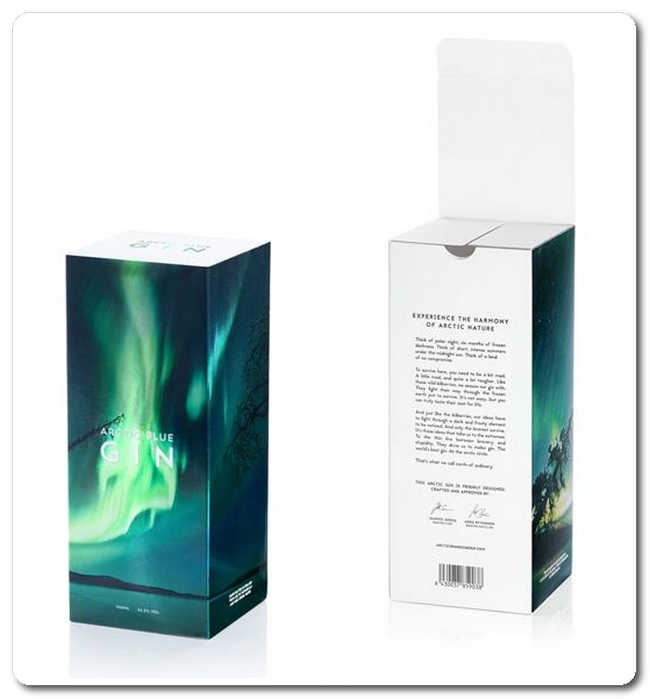
“We wanted to convey an image of a clean, crisp, winter night, highlighted with northern lights rippling across the Finnish sky. The imagery really stands out and provides exceptional visual elements for maximum brand enhancement,” says Mark Beamesderfer, Packaging Services Director Americas of Metsä Board.
Metsä Board
www.metsaboard.com
Metsä Board is a leading European producer of premium fresh fibre paperboards and forerunner in sustainability. We produce premium lightweight folding boxboards, food service boards and white kraftliners for consumer goods packaging as well as retail-ready and food service applications. We work together with our customers on a global scale to innovate solutions for better consumer experiences with less environmental impact. The pure fresh fibres Metsä Board uses are a renewable resource, traceable to origin in sustainably managed northern forests. We aim for completely fossil free mills and raw materials by 2030.
The global sales network of Metsä Board supports customers worldwide, including brand owners, retailers, converters and merchants. In 2019, the company’s sales totalled EUR 1.9 billion, and it has approximately 2,400 employees. Metsä Board, part of Metsä Group, is listed on the Nasdaq Helsinki.
Metsä Group
www.metsagroup.com
Metsä Group is a forerunner in sustainable bioeconomy utilising renewable wood from sustainably managed northern forests. Metsä Group focuses on wood supply and forest services, wood products, pulp, fresh fibre paperboards and tissue and greaseproof papers.
In 2019, Metsä Group’s sales totalled EUR 5.5 billion, and it employs approximately 9,300 people. Metsäliitto Cooperative is the parent company of Metsä Group and is owned by approximately 103,000 Finnish forest owners.
Voith Group successfully completes the acquisition of Toscotec.
Toscotec is pleased to announce that, following the obtainment of all required regulatory approvals, Voith has successfully completed its acquisition of Toscotec. Toscotec is now part of the Voith Group.
Andreas Endters, President and CEO of Voith Paper, says: “Toscotec’s acquisition matches Voith’s targets of strategic growth in a perfect way. Toscotec’s range of products and services effectively supports our portfolio and further strengthens our position as a full-line supplier in important areas of the paper industry.”
Toscotec will continue to offer its portfolio as established. The company will remain entrepreneurial in nature and will operate under the established Toscotec brand. In the area of tissue, Toscotec will carry out the business with new lines and major rebuilds for the whole Voith Group in the future. Voith Paper will continue to serve its delivered tissue machines. All other business activities will remain unaffected, and Voith and Toscotec customers will be able to purchase via their existing sales channels as usual.
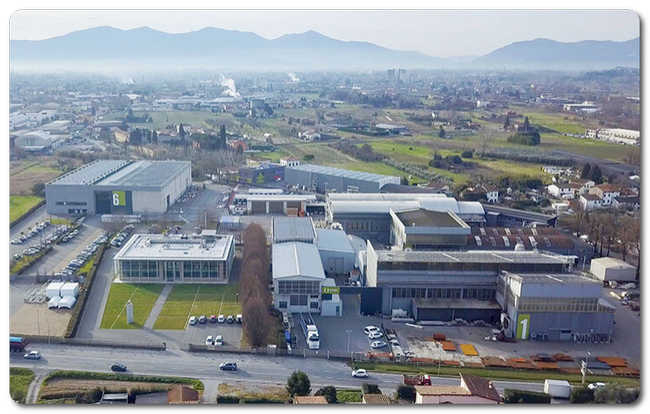
Alessandro Mennucci, CEO of Toscotec, says: “This acquisition is a landmark in the history of our company. By joining forces with Voith, we plan to pursue new ambitious goals. We will build on our expertise and strong reference base in the paper industry and will be able to offer added value to our customers.”
Established in 1948, Toscotec specializes in the design and manufacture of machinery and equipment for the production of tissue, paper, and board. Headquartered in Lucca, Italy, and with subsidiaries in China and the USA, Toscotec provides its customers with state-of-the-art technologies and customized solutions from complete production lines to rebuilds and single components. Technology Group Voith acquired 90 percent of the shares.
The Voith Group is a global technology company. With its broad portfolio of systems, products, services and digital applications, Voith sets standards in the markets of energy, oil & gas, paper, raw materials and transport & automotive. Founded in 1867, the company today has more than 19,000 employees, sales of € 4.3 billion and locations in over 60 countries worldwide and is thus one of the larger family-owned companies in Europe.
ANDRITZ to deliver DCS checkout and operator training simulator for Klabin’s Puma II project, Brazil
ANDRITZ Brasil Ltda., part of international technology Group ANDRITZ, has received an order to supply dynamic simulation solutions for Klabin’s Puma II pulp mill project in Ortigueira, Paraná, Brazil.
ANDRITZ Automation will be responsible for development of the dynamic simulation models, DCS checkout (DCS logic test and validation) and operator training simulator (OTS). ANDRITZ’s proprietary simulation tool IDEAS™ will be used to model the recovery boiler #2 and power boiler #2 supplied by ANDRITZ and the evaporator #2 supplied by another vendor. The simulated models will be used to test and verify process design concepts, identify and correct errors in the control logic and provide realistic, hands-on training modules for the operators, helping Klabin to achieve a faster and smoother start-up. In addition, the simulator will allow training of operators on the core processes in a risk-free environment prior to operating the actual plant.
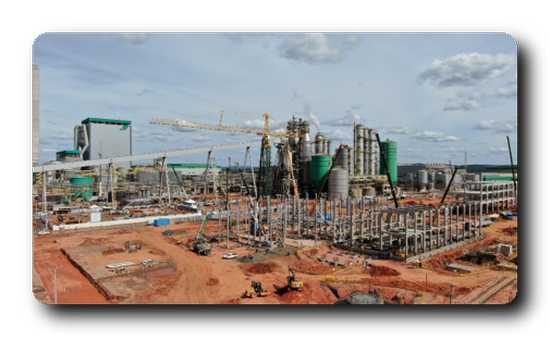 Klabin’s recovery boiler and power boiler © ANDRITZ
Klabin’s recovery boiler and power boiler © ANDRITZ
“The well proven ANDRITZ IDEAS simulation tool has been used during commissioning, start-up and training in almost all pulp & paper greenfield projects in Brazil since 2002. We are very proud that Klabin decided again to choose IDEAS as the main simulation tool for the Puma II project. IDEAS’ incomparable technology, its unique training platform as well as the outstanding results from the Puma°I project, where ANDRITZ supplied simulation tools for key process areas in addition to major equipment and technologies, were decisive in award of the order to ANDRITZ,” says Leonardo Alves, Application and Sales Manager in Brazil for the Automation division. “Today, IDEAS software is also used to create digital twins of client mills. These digital twins run online. This kind of application can be used to measure the conditions and/or physical characteristics of a process and provide virtual measurements where real-world measurements are impossible, thus real-time plant optimization has become a reality,” he concludes.
For Klabin’s Puma II project, ANDRITZ will supply energy-efficient and environmentally friendly pulp production technologies and key process equipment, including the wood processing plant, recovery boiler, power boiler and white liquor plant.
ANDRITZ launches the new tissue machine PrimeLineVRT – Vertical CrescentFormer – for dry crepe tissue
International technology Group ANDRITZ has officially launched its new PrimeLineVRT – Vertical CrescentFormer – tissue machine for the production of dry crepe tissue.
The PrimeLineVRT features a vertical CrescentFormer in the forming section that enhances dewatering of the fiber web. This enables higher dryness right after the press section and an increase in paper caliper. Depending on the grade and basis weight of the paper produced, between two and four additional percentage points of dryness can be achieved after the press section compared to standard CrescentFormer configurations.
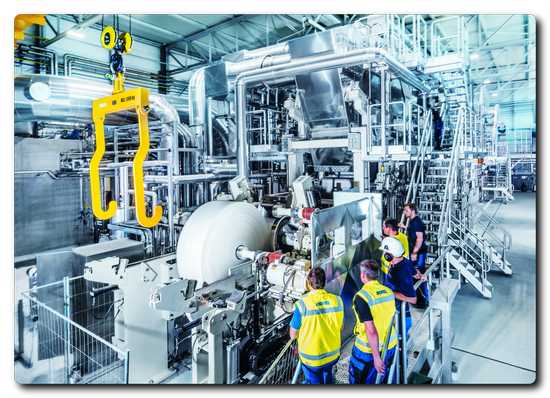 The new VRT technology was developed and intensively tested at the ANDRITZ PrimeLineTIAC tissue pilot plant in Graz, Austria. © ANDRITZ
The new VRT technology was developed and intensively tested at the ANDRITZ PrimeLineTIAC tissue pilot plant in Graz, Austria. © ANDRITZ
“The advantage of this new technology is that we do not need additional fabrics and fabric loops or any extra space in the basement for installation of the equipment.This results in lower building costs as well as easier operation and maintenance compared to similar technologies on the market,” says Stefano Marenco, Director of PrimeLineTIAC and R&D Tissue at ANDRITZ.
The PrimeLineVRT was developed and extensively tested at the ANDRITZ Tissue Innovation and Application Center in Graz, Austria. With this new technology that is tailormade for significant improvement of dry crepe production, ANDRITZ once again confirms its strong position as one of the global market leaders for the supply of innovative key components used in conventional to ultra-premium grades within the tissue industry.
For more information about the PrimeLineVRT, contact us at This email address is being protected from spambots. You need JavaScript enabled to view it. or visit us at the Tissue World Miami trade show from March 11 to 13, 2020, to discuss your next tissue project with our experts at booth no. B15.
ABB launches new Optical Consistency Transmitter sensors to improve retention measurement
New sensors offer widest variety of measurement options available, incorporating unique principles for unparalleled levels of accuracy and control, with reduced maintenance.
ABB has just launched its KPM KC9 Optical Consistency Transmitter family, a new range of sensors that provide accurate measurement of total and/or ash consistency for better wet end measurement and control in pulp and paper processes. The sensors are suitable for pulp, paper, board and tissue manufacturers using virgin or recycled raw materials, particularly those using ash fillers, where only optical sensors are effective to measure ash consistency.
Available as either inline or bypass sensors, the entire KPM KC9 Optical Consistency Transmitter family offers the widest range of sensor options currently available and is best suited to measure the lowest consistency ranges. Providing reliable and accurate results, the sensors permit maintenance while processes are running, unlike other consistency sensors which require a shutdown and emptying of the process pipe.
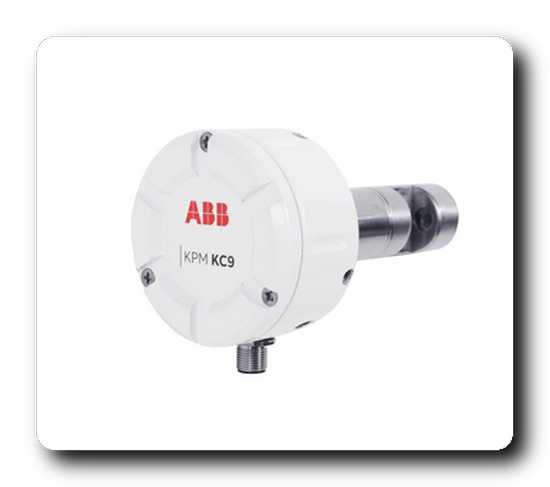 ABB KPM KC9 Inline Optical Consistency Transmitter sensor
ABB KPM KC9 Inline Optical Consistency Transmitter sensor
The sensors work in tandem with ABB’s KPM KRA/KRT Retention Measurement System, used to monitor and control paper and board machine retention. Available in two options, the KRA unit measures white water total consistency as well as ash consistency. The KRT unit measures total consistency only.
“These new sensors employ unique measuring principles to ensure each application is covered cost effectively without compromising measurement accuracy,” said Per Sandstrom, Head of Lab and Process Testing Measurements, Pulp and Paper, Process Industries, ABB. “The sensors provide better control of deinking processes and machine wet end, enabling the highest proportion of on spec product with limited maintenance and lower installation costs.”
Besides its Optical Consistency Transmitter, ABB’s retention measurement system includes all necessary modules to ensure accurate and trouble-free measurement of headbox or white water stock, where consistency is so low that only optical technologies can be used. The system and sensors are part of ABB’s complete solution set for the wet end, including quality control, automation, advanced process control, instrumentation and much more.
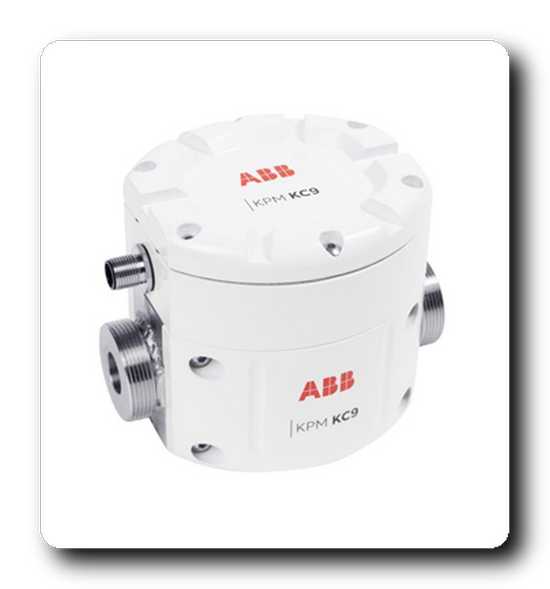 ABB KPM KC9 Bypass Optical Consistency Transmitter sensor
ABB KPM KC9 Bypass Optical Consistency Transmitter sensor
The KPM KC9 Optical Consistency Transmitter range
Inline sensors
The KPM KC9 inline consistency sensors are developed to measure single component fiber consistency in liquids from 0-14 percent.
Bypass sensors
The KPM KC9 bypass consistency sensors are developed to measure consistency in liquids from 0–5 percent.
All the new models with updated electrical and software design are evolved from industry-proven KPM OC Optical Consistency Transmitters. These were originally developed in cooperation with Cerlic, which has a 40-year heritage in pulp and paper applications.
For further information on the KPM KC9 Optical Consistency Transmitter family of sensors, please visit: https://new.abb.com/pulp-paper/abb-in-pulp-and-paper/products/process-measurements
Building success together
Businesses in Brazil benefit from Sulzer engineering solutions
Since 1948 Sulzer has established a network of technically advanced repair and maintenance facilities. Today, service centers specializing in the repair and maintenance of all types of rotating equipment support local industry.
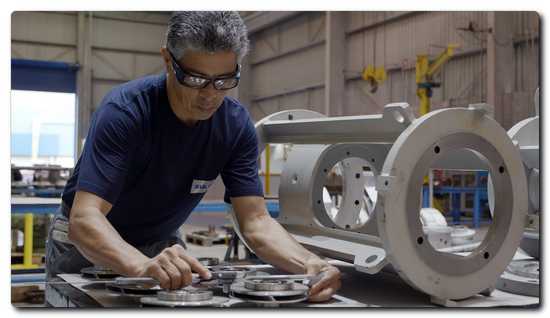 Brazilian service centers can deliver retrofit projects that re-engineer pumps to perform more efficiently
Brazilian service centers can deliver retrofit projects that re-engineer pumps to perform more efficiently
The Brazilian service centers are positioned to deliver quality equipment and maintenance services using high-precision instruments and machine tools. The experienced and dedicated teams of engineers provide flexible, round-the-clock support to customers in many industrial sectors.
Sulzer provides tailored engineering solutions to key businesses in the area, such as water, pulp and paper, refineries, hydrocarbon processing, fertilizers, power generation and more general industry. Every day, the teams take on the challenges posed by customers to deliver the best quality repairs that offer improved reliability and productivity.
To see how Sulzer can support the region watch the latest overview video:
Sulzer supports Brazilian customers with high quality pumping solutions as well as its rotating equipment services for all industries. Specialist designers can deliver retrofit projects that re-engineer large pumps to perform more efficiently and offer better productivity.
Marcelo Alves, President South America – Rotating Equipment Services and Managing Director at Sulzer in Brazil says “We have experience in working on gas turbines, industrial compressors, large scale pumping installations as well as motors and generators. From installing new equipment to repairing and maintaining existing assets, we have the skills and expertise to support the Brazilian industry.
“Whatever the project, our engineers have the support of the wider Sulzer organization, which has extensive knowledge and resources that offer cutting-edge solutions. In all of Sulzer’s facilities, customers are welcomed to discuss challenges and inspect on-going work, keeping communication at the heart of every project.”
Sulzer’s global network of 180 production and service sites distributed across more than 50 countries, including Argentina, Chile, Colombia and Venezuela, makes it possible for the company to support Brazil’s global competitiveness in its key sectors with state-of-the-art engineering solutions. Brazilian businesses can benefit from a wide range of services to boost operational efficiency while minimizing their downtime.
